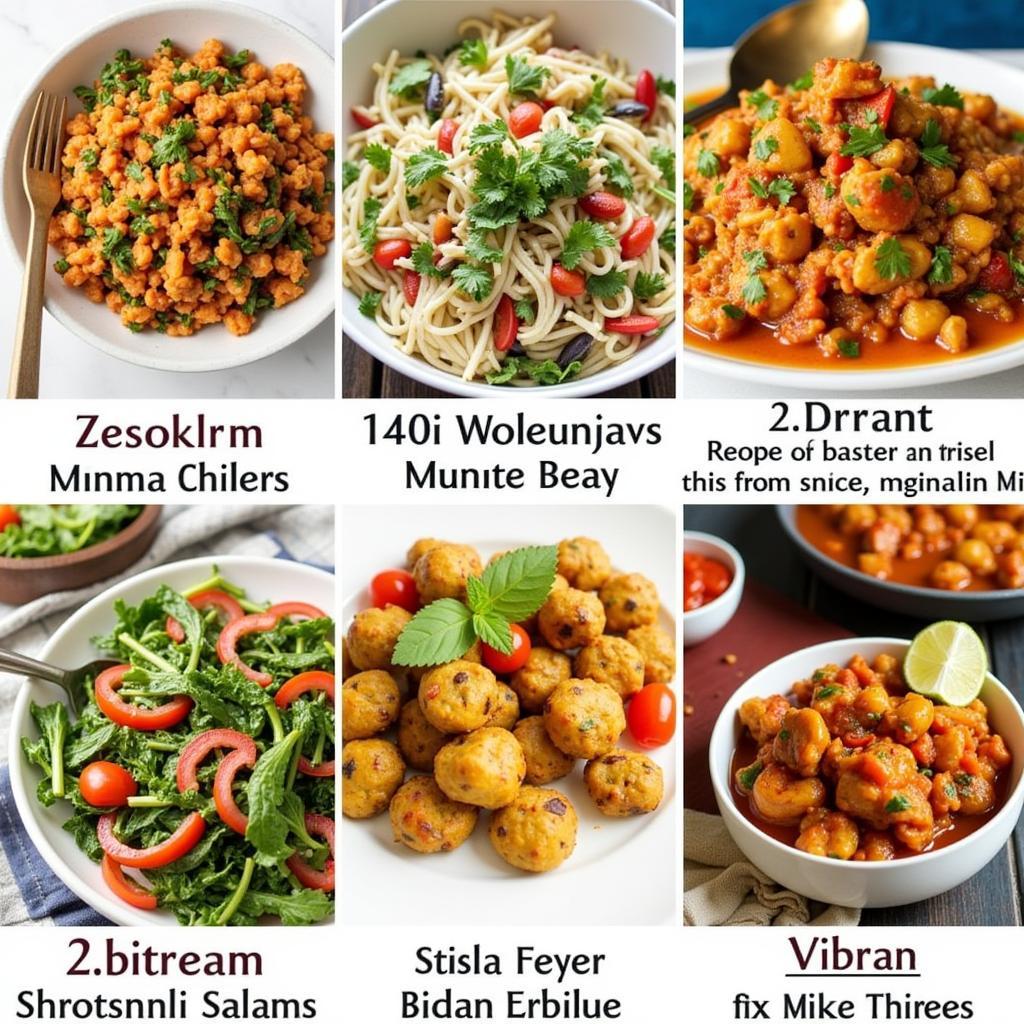Matchmaker Food isn’t about setting up dates for your leftovers. It’s about understanding the delicate dance of flavors and textures that transform a meal from ordinary to extraordinary. It’s the art of combining ingredients in a way that elevates each individual component while creating a harmonious whole. Whether you’re a seasoned chef or a kitchen novice, mastering the principles of flavor pairing can unlock a world of culinary possibilities.
The Science and Art of Matchmaker Food
Food pairing is both a science and an art. Scientifically, it involves understanding the chemical compounds that contribute to flavor. Certain compounds, when combined, create synergistic effects, enhancing the overall taste experience. Artistically, it’s about intuition, experimentation, and developing a palate sensitive to nuances. It’s about understanding how contrasting textures and temperatures can add depth and complexity to a dish.
Understanding Flavor Profiles
Every ingredient has a unique flavor profile, composed of basic tastes (sweet, sour, salty, bitter, umami) and aromatic compounds. Matchmaker food involves identifying these profiles and finding complementary partners. For example, the sweetness of ripe mangoes beautifully balances the spicy heat of chili peppers, while the earthiness of mushrooms enhances the richness of beef.
- Sweet and Spicy: This classic combination is found in cuisines worldwide, from Thai curries to Mexican mole.
- Salty and Sour: Think of the tangy delight of salt and vinegar chips or a pickle alongside a savory sandwich.
- Umami and Fat: The savory depth of umami pairs perfectly with the richness of fat, as seen in the combination of Parmesan cheese and olive oil.
Matchmaker Food: Techniques for Success
Creating successful flavor pairings involves more than simply throwing ingredients together. It requires careful consideration of various factors, including:
Considering Texture and Temperature
Texture plays a crucial role in the overall dining experience. Contrasting textures, such as crispy and creamy or crunchy and soft, add interest and dimension to a dish. Similarly, temperature can influence how we perceive flavors. A cold sorbet can cleanse the palate after a rich, savory course, while a warm soup can be incredibly comforting on a chilly day.
Regional Influences on Matchmaker Food
Different cultures have their own unique approaches to flavor pairing, often reflecting the local ingredients and culinary traditions. Exploring these regional variations can inspire new and exciting combinations in your own kitchen.
- Asian Cuisine: Often emphasizes the balance of sweet, sour, salty, spicy, and umami.
- Mediterranean Cuisine: Highlights fresh herbs, citrus, olive oil, and tomatoes.
- Indian Cuisine: Known for its complex spice blends and aromatic curries.
 Matchmaker Food in Different Regional Cuisines
Matchmaker Food in Different Regional Cuisines
Beyond the Basics: Advanced Matchmaker Food
Once you’ve mastered the fundamental principles of flavor pairing, you can start experimenting with more advanced techniques. This includes exploring the world of molecular gastronomy, understanding how different cooking methods affect flavor, and developing your own signature combinations.
Expert Insights on Flavor Pairing
“Understanding the interplay of flavors is essential for creating memorable dishes,” says renowned chef, Auguste Escoffier Jr. “It’s about finding the perfect balance, where each ingredient shines while contributing to the overall harmony.” Another culinary expert, Dr. Umami Sato, adds, “Don’t be afraid to experiment. The most exciting flavor discoveries often come from unexpected combinations.”
Matchmaker Food: Creating Culinary Magic
Matchmaker food is more than just a culinary technique; it’s a journey of discovery. It’s about exploring the endless possibilities of flavor and creating dishes that delight the senses. By understanding the principles of flavor pairing, you can transform your meals from simple sustenance to culinary masterpieces.
In conclusion, matchmaker food is about creating culinary harmony. By understanding the science and art of flavor pairing, you can unlock a world of delicious possibilities in your kitchen.
FAQ
- What is matchmaker food?
- How do I identify flavor profiles?
- What are some common flavor pairings?
- How does texture affect flavor?
- Where can I find more information on matchmaker food?
- What are some regional variations in flavor pairing?
- How can I experiment with advanced flavor pairing techniques?
Need support? Contact us at Phone: 02437655121, Email: minacones@gmail.com Or visit us at: 3PGH+8R9, ĐT70A, thôn Trung, Bắc Từ Liêm, Hà Nội, Việt Nam. We have a 24/7 customer service team.